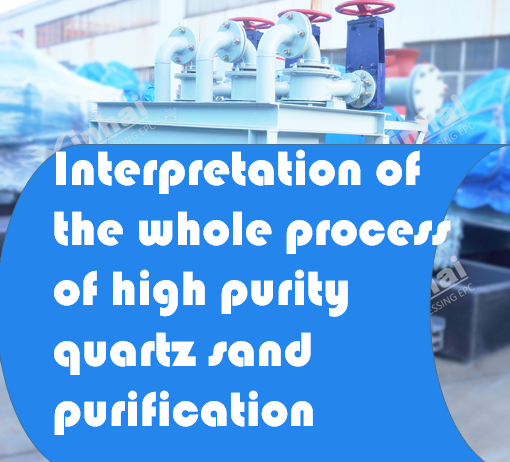Interpretation of the whole process of high purity quartz sand purification
2024-11-21 Xinhai (1498)
2024-11-21 Xinhai (1498)
If you have any questions, please contact us through the following ways, we will give you more and better assistance!

In order to further improve the purity of quartz sand, a series of physical and chemical methods need to be used to deeply purify it. Acid leaching is a key process for removing metal impurities in quartz sand. Commonly used acid leaching agents include hydrochloric acid, nitric acid and sulfuric acid.
Taking hydrochloric acid leaching as an example, quartz sand is put into a hydrochloric acid solution with a concentration of 10% to 20%, and stirred and leached at 90°C to 100°C for 2h to 4h. Impurity ions such as Fe, Al, and Ca can be dissolved in the acid solution. , high-purity quartz sand can be obtained after filtration and washing.
High-temperature heat treatment is an important means to improve the physical and chemical properties of quartz sand. Quartz sand will undergo a series of phase changes and structural changes during the heating process, and the heat treatment effects in different temperature ranges vary significantly. When the temperature is low, quartz sand exists stably in the form of α-quartz. At this time, the vibration of Si-O bonds in the crystal lattice gradually increases, which improves the hardness and wear resistance of quartz particles.

As the temperature further increases, α-quartz undergoes a reversible transformation into β-quartz, accompanied by a certain degree of volume expansion. This transformation will induce micro-cracks on the surface of quartz particles and significantly increase the specific surface area, which is beneficial to improving the interface bonding performance with the resin matrix. When the temperature exceeds a certain threshold, the quartz undergoes an irreversible phase change from β-quartz to β-tridymite. The volume shrinks significantly, causing the particles to break and the particle size to decrease. As the temperature is further raised to higher levels, tridymite transforms into cristobalite and eventually fuses to form glassy silica.
The particle size distribution and surface properties of quartz sand have a decisive influence on its application performance, so it needs to be finely graded and surface modified.
Wet electrostatic classification is an efficient particle size control technology that uses differences in particle surface charges to separate particles of different sizes. During the classification process, the quartz sand suspension passes through a classification column with a high-voltage electrostatic field. Oppositely charged particles migrate toward the two poles under the action of the electric field force, ultimately achieving precise classification in the particle size range of 1 μm-100 μm.
The preparation of high-purity quartz sand is a systematic project involving mineral processing, purification, deep processing and other links. Through the comprehensive use of physical separation, chemical leaching, heat treatment modification and other technical means.